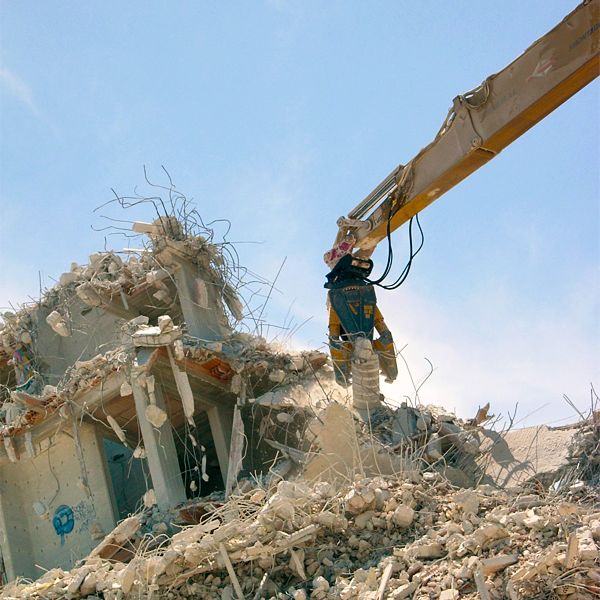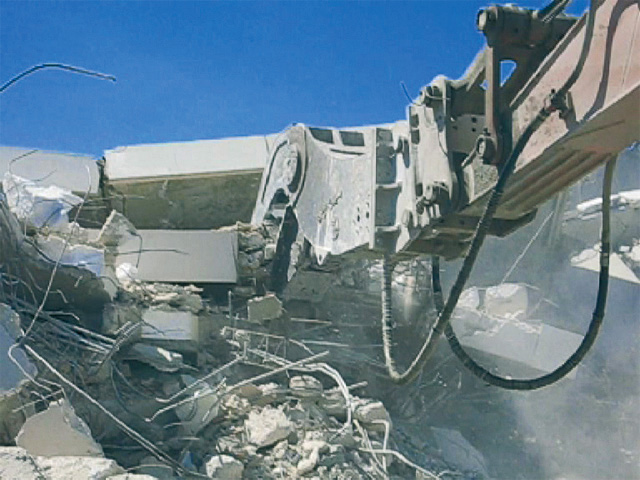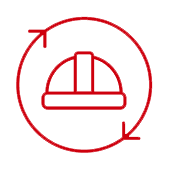Punta Perotti: the last seafront building in Bari turned to dust by Indeco pulverizers
The Punta Perotti saga finally came to a close when the third and last building in the complex, “Palazzo Quistelli”, was demolished mechanically. The whole operation, which took place in various phases on different days, involved demolishing the first two blocks in the complex with 5 tons of TNT and 5000 metres of fuse wire, bringing down a total of 163,000 cubic metres of material.
The third and last building on the seafront, Palazzo Quistelli, was brought down by a special machine with a modular arm that could reach up to a height of 52 m above ground. It was decided to go ahead in the final phase without using explosives, because the Explosives Commission doubled the evacuation area around the building compared with the first explosions, as they regarded the original specifications as being too small to guarantee total safety.
The Quistelli building was demolished by a “PMI 980 Superlong Demolition” tracked excavator, weighing 140 tons with a 14 litre internal combustion engine. There are only four of these machines in the world, and two of them are in Europe. General Smontaggi, the firm which won the tender for the demolitions, call it a sort of “rodent dinosaur”. The machine includes a modular demolition boom which reaches an operational height of 52 m.
The choice of which equipment to mount on the end of the boom depends on the operational height and on the building that needs demolishing. The machine can carry cutters for shearing carbon steel, a crusher for demolishing concrete or a pulveriser, each weighing between 1500 and 4500 kg.
The accessories used on the Punta Perotti site included an Indeco Multi 850 in demolition crusher configuration and an IFP 1000 fixed pulverizer. After the whole building had been demolished, primary demolition of the concrete was carried out with tracked excavators which reduced it by 95%, followed by secondary crushing with a mobile crusher, used for reducing the volume of the rubble. This made it possible to separate all of the concrete from the steel rods, so that the material could be used to backfill the trenches and flatten out the land again. When the volume of the rubble on the ground has been completely reduced, a layer of soil will be added.









